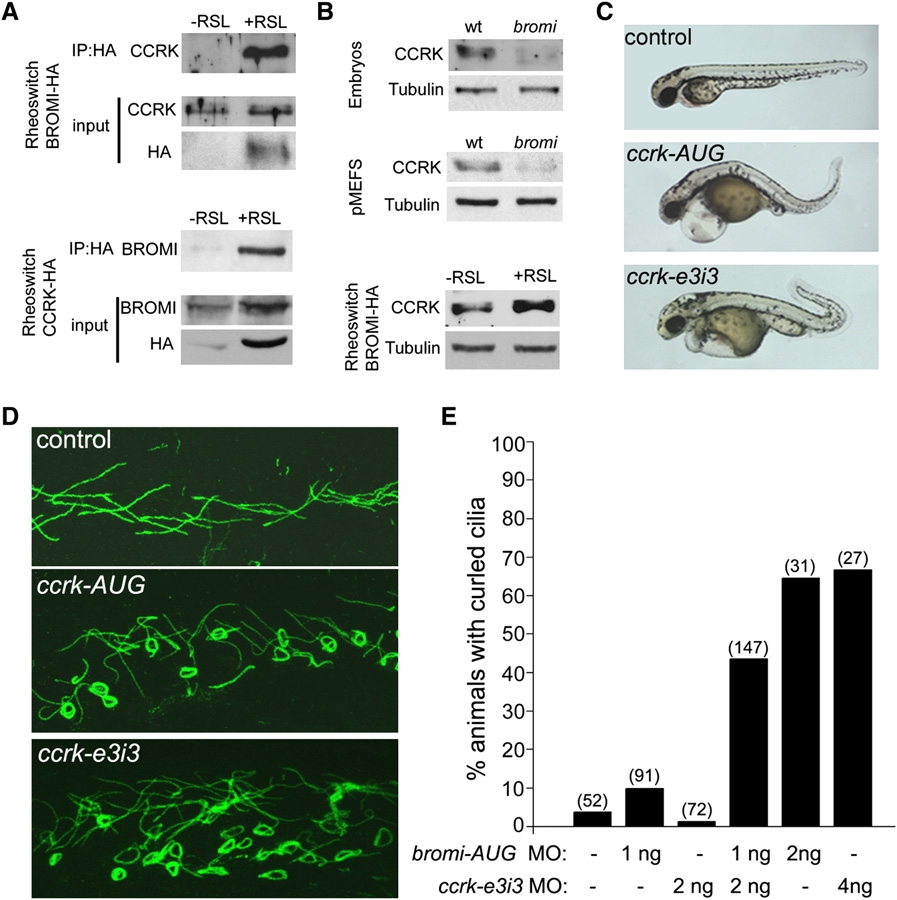Fig. 7
CCRK Interacts with Bromi and Acts in Vertebrate Ciliogenesis
(A) HA-tagged Bromi or HA-tagged CCRK, expressed in NIH 3T3 fibroblasts by Rheoswitch ligand (RSL1)-mediated induction, coimmunoprecipitated endogenous CCRK and Bromi, respectively.
(B) CCRK protein levels in WT versus bromi mutant embryos and embryonic fibroblasts and in uninduced versus RSL1-induced Bromi-HA-expressing NIH 3T3 cells. RSL1 treatment of parental Rheoswitch cells had no effect on CCRK levels (data not shown). Anti-β-tubulin was used as a loading control.
(C) Injection of MOs (4 ng) directed against the start site (ccrk-AUG) and exon 3/intron 3 splice site (ccrk-e3i3) of the zebrafish ccrk homolog resulted in kinking of the body axis and abnormal tail curvature.
(D) Confocal microscopy of acetylated α-tubulin-stained cilia in the posterior (distal early/late) regions of the kidney tubules.
(E) Percentage of animals exhibiting curled cilia. Injection of low doses of bromi-AUG or ccrk-e3i3 MOs (1 ng or 2 ng, respectively) had little effect on their own, whereas coinjection of both MOs at these doses had a synergistic effect. Values in parentheses represent numbers of animals scored.
Reprinted from Developmental Cell, 18(2), Ko, H.W., Norman, R.X., Tran, J., Fuller, K.P., Fukuda, M., and Eggenschwiler, J.T., Broad-Minded Links Cell Cycle-Related Kinase to Cilia Assembly and Hedgehog Signal Transduction, 237-247, Copyright (2010) with permission from Elsevier. Full text @ Dev. Cell

